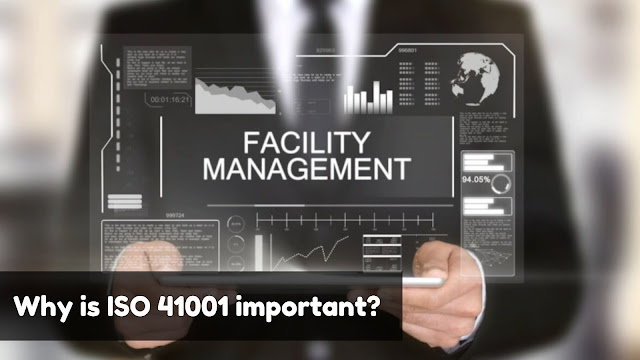The ISO 41001:2018 standard aims to assist
facilities management companies in increasing productivity in several areas,
including operations, maintenance, and procurement.
Facilities management (FM) trauma and introspection
brought on by numerous Industry collapses are nearly flawlessly countered by
the extremely intelligently developed ISO 41001
"Facility management — Management systems" standard. Whether provided
by an internal team or a contractor, implementing and becoming accredited to
this standard could pave the way for the cooperative, sustainable, and mutually
beneficial provision of workspaces.
Facility management is an organizational function
that combines its diverse resources to achieve a single strategic aim of
producing high-quality goods and services using people, places, and processes
in the built environment, improving people's quality of life, and boosting
corporate efficiency.
Office spaces are now designed with numerous
workers per desk to facilitate simple working. Today, "demand
organizations" - for both internal and external customers - need improved
standards of this formerly unimportant adjunct to their core activities because
workplaces are typically becoming the second largest overhead after staff costs
and, on the other hand, one of the key differentiators in the "war for
talent".
To improve people's quality of life and promote
productivity in the core business, facility management ISO 41001 is the
organizational function that integrates diverse resources, whether internal or
external, people, place, and processes, within the setting.
Unfortunately, some industries have "taken
liberties" that might not always be advantageous to all relevant parties
due to a lack of knowledge (dereliction of duty by employers/customers; in some
cases, government). Some of those use so-called "aggressive
accounting," while others compare apples and pears. An illustration would
be the immediate booking of the entire projected earnings from a five-year contract
in the first year without any depreciation planning or contingency. It's hard
to imagine a harsher critique of corporate leadership. Also, in this case, the
ISO 41001 standard could be useful.
There is a clear, pressing need for a route towards
a good future. The guidance standard ISO 41012 ‘Facility management — the
development of agreements and guidance on strategic sourcing’ has been
published and has a key philosophical approach contained in the statements
under Section 7.1: “That the provision of facilities management is a joint and
inter-dependent relationship between demand organization and service provider”.
Although ISO 41001 is a standard that may be
audited, a service provider cannot be audited separately from the contract it
is managing or the service it is offering. To guarantee that mutuality and
benefits are maintained throughout the agreement, consideration may be given to
changes in essential business requirements.
Other standards relevant to this expanding field
are ISO 55001 for asset management and ISO 44001 standard for collaborative
business relationship management systems. Both standards provide practical,
well-organized, and complimentary foundations for a more stable future.
FM has a variety of problems, from the worst excesses
of bad administration and management to a far more positive abundance of new
rules, guidelines, and standards. Therefore, demanding client and contractor
collaboration is quite practical and valuable, not to mention Value-for-Money,
and is headed by a particularly collaborative ISO standard—ISO 41001:2018—which
unequivocally covers all these.
Process of ISO 41001 Certification
The assessment of ISO 41001:2018 is challenging,
tenacious, and strategic. Documentation in comparison to the policy norm is
fairly substantial and needs the help of professionals. to expedite and
simplify the ISO 41001
Certification process. Hiring a consultant can assist you and your
company in completing the following procedures to become ISO 41001 Certified:
1. Gap analysis instruction and testing
2. Documentation and Test Report
3. Process Audit
4. External Audit
5. Certification and Beyond

No comments:
Post a Comment